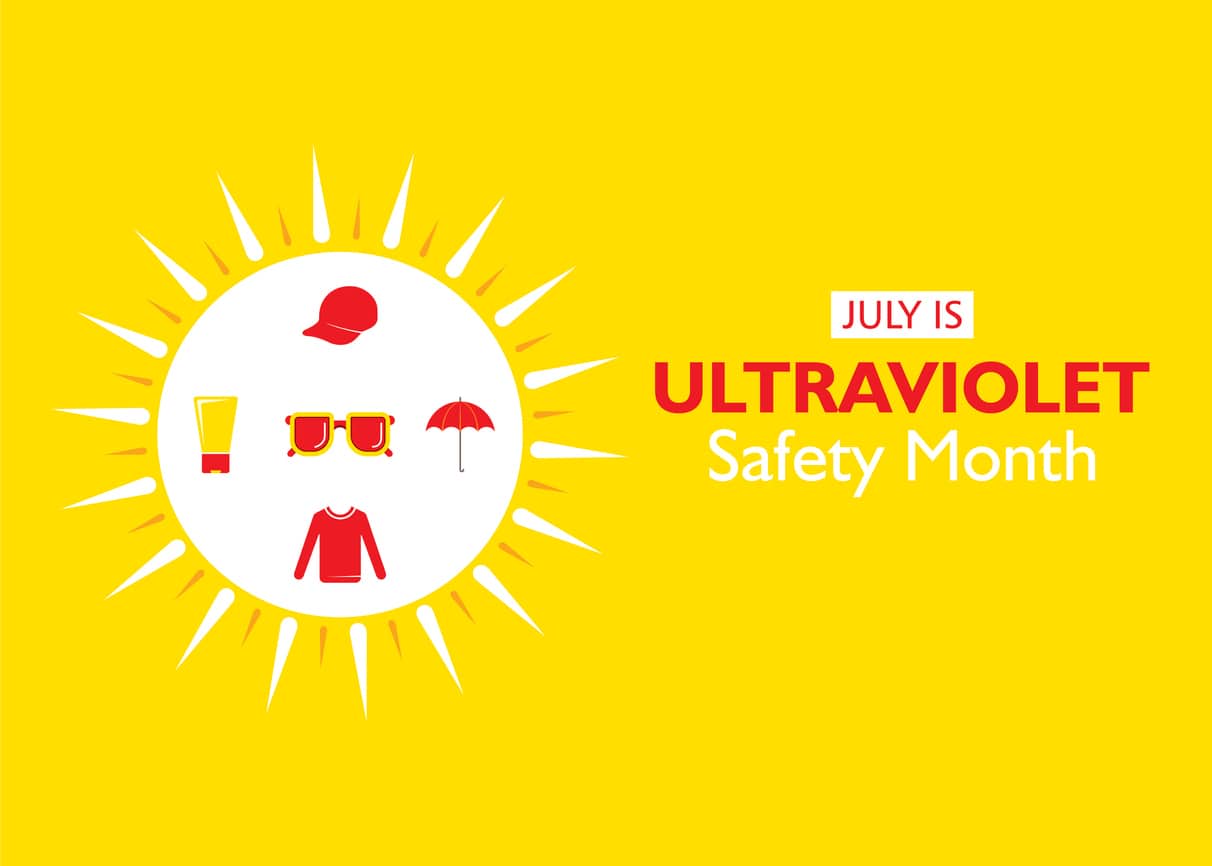Ultraviolet (UV) Radiation
July is UV Safety Month! Ultraviolet (UV) radiation is a form of electromagnetic radiation that comes from the sun and man-made sources like tanning beds and welding torches. The American Cancer Society explains that radiation is the emission of energy from any source. There are many types of radiation. ranging On the spectrum of radiation, x-rays and gamma rays are considered very high energy and the most damaging. Radio waves are very low-energy and the least damaging. UV rays are right in the middle; they have more energy than visible light but not as much as x-rays.
Sunlight is the main way we are exposed to UV radiation. Even though UV rays make up only a small portion of the sun’s rays, their strength depends on the time of day, time of year, distance from the equator and the altitude. The actual amount of UV exposure a person gets will depend on the strength of the rays, the length of time the skin is exposed, and whether the skin is protected with clothing or sunscreen.
Does UV Radiation Cause Cancer?
The International Agency for Research on Cancer (IARC) is part of the World Health Organization (WHO). One of its major goals is to identify causes of cancer. Based on the available data, IARC has determined that UV radiation is is carcinogenic to humans, meaning it has the potential to cause cancer. Because UV rays don’t penetrate deeply into the body, they wouldn’t be expected to cause cancer in internal organs and research has not found such links. However, basal and squamous cell skin cancers have been linked to too much UV exposure.
Preventing Skin Cancer
It is not possible or healthy to avoid the sun completely. In fact, sunlight does have some health benefits for your body. Your skin makes vitamin D naturally when it is exposed to UV rays from the sun. How much vitamin D you make depends on many things, including how old you are, how dark your skin is, and how strong the sunlight is where you live. The American Cancer Society states that doctors aren’t sure what the optimal level of vitamin D is, but a lot of research is being done in this area. At this time, it is important to also incorporate vitamin D into your diet and follow the following prevention tips when out in the sun:
- 10am-2pm are the peak UV radiation hours, so whenever possible, plan your activities for the morning or evening to avoid being exposed during this time.
- Wear protective clothing, sunglasses with UV protection, and a hat.
- Spend time in the shade. If there is not shade available, bring and umbrella or a tent to create your own.
- If you are out in the sun, reapply sunscreen frequently. Visit our past blog post to learn how to choose the best sunscreen.
- Avoid tanning beds, sun lamps, tanning pills, or any tan enhancing products.
In addition, frequent self-exams are essential for detecting skin cancer early and setting yourself up for successful treatment. Doctors recommend doing a self-exam at least once a month. If you find anything unusual, from a growing or changing spot on the skin to a rough, scaly red patch, schedule an appointment with your doctor. For more information on UV radiation and preventing skin cancer, click here.



